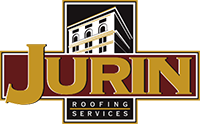Typical Roof Warranty Coverage Explained
Congratulations on the purchase of your new roof (or your new roof warranty as some would say). Now you get to sit back and enjoy the next (insert your warranty term here) years with no roofing worries. Or do you? The simple answer is that it depends on what you actually just purchased.
Most building owners or facility managers tend to focus on just the length of the warranty and never fully understand the ins and outs of what is and what is not covered leaving you open to some surprises later down the road. Fully understanding a typical roof warranty can help you get the most out of your coverage.

It probably won’t surprise you to learn that roofing warranties are more geared toward protecting the manufacturer than the building owner. Roofing manufacturers spend big bucks on lawyers to compose tons of fine print that ultimately try to limit their own liability if something goes wrong with their roofing products. That’s why it’s so important that you understand the following before signing off on your project and warranty purchase:
If you haven’t purchased your new roof (or warranty) yet, ask for a sample of the roof warranty template and read through it and ask for clarifications from your contractor. If you have purchased already, here are some of the most common questions I get asked.
What’s the difference between a contractor roof warranty and a manufacturer roof warranty?
This one is pretty straight forward. One comes from the roofing company that installed the roof and one comes from the manufacturer of the roofing material.
Manufacturer warranties vary and some cover only the material while others cover the entire system. Most manufacturer warranties also require the contractor to perform warranted repairs for the first few years after the install.
Contractor roof warranties typically do not cover materials and only cover workmanship.

Material-Only Warranty vs. Labor-Only Warranty vs. System (Labor and Material) Warranty
A roofing material only warranty usually has a lower cost than a full system warranty but only covers manufacturing defects and premature deterioration for the length of the warranty. Material only warranties only cover the roof membrane and do not cover other accessories such as flashings, adhesives, metal edge, etc.
This type of warranty would only cover the cost of materials to repair or offer a credit toward the purchase of new membrane. These warranties in no way cover or include any labor or coverage for installation errors. Material only warranties also do not provide coverage for leak repair costs.

A labor-only warranty covers only the labor required to address a roof defect and does not cover the cost of materials. These types of warranties are usually offered by the roof installer. Note that this type of warranty is not a roof workmanship warranty and may not cover repairs for installation errors.
A full system warranty will typically cover not only the material, but also manufacturer approved flashings, accessories and metal work utilized in the original installation. These types of warranties will typically cover full cost, labor included, for any leak repairs within the warranty terms and conditions. I’ll go into more detail below on what is and isn’t covered under this type of warranty. Again this type of warranty may not cover installation errors.
Labor Warranty vs. Roof Workmanship Warranty
These two types of warranties are often confused so let’s clear up what the difference is.
Labor warranties typically cover the costs related to repairing a defective roof within the limits of the roof system coverage. Most full system warranties include labor. This type of warranty however does not cover the cost of repairs associated with installation failures. That is why the most important aspect of your roof system is a good installation!
Not much can protect you against installation defects apart from a roof workmanship warranty from the installer. Also keep in mind that a warranty is only as good as the company backing it. Make sure you have a professional, long-standing roofing contractor install your roof!
A roof workmanship warranty will cover you against costs related to actual installation failures and errors which a labor-only warranty may not cover. Some system warranties do however cover workmanship. If your roofing system warranty does not include workmanship coverage you may be able to get this type of coverage directly from the installer.

What does a typical roof warranty cover?
Again this depends on the actual type of warranty you have received. You may be surprised by what you are or aren’t covered for. That’s why it’s so important to know what the typical roof warranty will cover before you purchase a new roof system. Make sure you always read the fine print and exclusions! Below are some typical things that are usually covered or that may require an extra fee. Also be aware that certain warranty coverage extras such as puncture coverage or high wind coverage require certain roof materials or installation methods which may impact the cost of the roof installation itself.
Roof Leak Repair
Most full system roof warranties will cover labor and material costs for roof leak repairs as long as the circumstances of the cause of the leak fall under certain requirements. For example, a typical roof warranty will not cover the cost of leak repair if the issue was caused by fire, lightning, high winds, hail, earthquakes, negligent acts, misuse, vandalism or loss of integrity of the structure.

High Winds
Damage caused by high winds is another issue that can fall outside of the typical roof warranty coverage. Check with your roofing contractor to find out what winds speeds you are covered for. For example, Carlisle SynTec’s Gold Seal warranty base coverage for wind is under 3 seconds of 55mph gusts. If your building is located in high wind or hurricane areas you may want to look into a wind gust upgrade. Keep in mind that this upgrade will increase the cost of your warranty and may also require additional enhancements to the roof system such as increased fastening patterns. Those enhancements will also increase the total cost of your new roof system.

Hail Damage Coverage
Another warranty add-on is hail coverage. Should your building be located in a hail-prone area you may want to consider a system design that will allow for this add-on to protect you from the cost of repairing a hail damaged roof. Of course, this may require enhancements that will increase the total cost of your new roof system.

Roof Puncture Coverage
If your roof system has high foot traffic you may want to consider adding accidental puncture coverage. There is an extra charge for puncture coverage and you also may need to have a certain roof membrane thickness for your system to qualify for this upgrade.

What doesn’t a typical roof warranty cover?
Almost as important as what is covered by your warranty is knowing what isn’t covered by your warranty. Here are some of the more common exclusions found in typical roof warranty language.
Ponding/Standing Water
There are different schools of thought on what the definition of ponding water is but at the end of the day what counts is what your roofing manufacturer deems “ponding water.” Most manufacturers define this as water that remains on the roof for a specified amount of time after rain has stopped. Warranties that exclude ponding water also exclude any issues caused by ponding water such as roof leaks or damage to the area in question.

Consequential Damages
Most roof warranties do not cover any consequential or interior damages caused by roof leaks or defects such as carpets, walls, ceilings, equipment and merchandise, etc.
Acts of God
These are things such as high winds (sometimes extra wind coverage can be added), hail (same with hail, extra coverage can be added), tornadoes, floods, fires, etc. These items are typically not covered.
Existing Moisture
If you or your roofing contractor is planning to install a new roof system over an existing roof system the manufacturer may require an infrared scan prior and after the roof installation to ensure there is not moisture trapped in the existing system. Existing moisture that affects a new roof system is not typically covered.
Improper Roof Repairs
Contractors using improper repair materials or improper repair methods may void the manufacturer warranty. The manufacturer will also not cover the costs to have those improper repairs fixed by an authorized applicator. It is also worth noting that there may be additional costs for you to have the manufacturer come out to inspect the newly repaired area(s) in order to reinstate the warranty.

Unauthorized Alterations or Repairs
Should you be planning to install a new rooftop unit, addition or alteration to a warranted roof system make sure you talk with the manufacturer before proceeding. For example if you have an HVAC company install a new unit on your warranted roof but neglect to have a manufacturer authorized roofer flash the unit in you may chance voiding your warranty.

Replacement
Unfortunately you will never find a roof warranty that will cover the replacement of your roof system. You might even get the material cost covered but never the labor to install a new roof.
What does NDL mean?
NDL stands for “No Dollar Limit” and means exactly what you are thinking. A “no dollar limit” warranty ensures that the manufacturer will have to cover any and all costs associated with repairing the roof leak.
What is an original cost warranty?
With an original cost warranty the manufacturer is only obligated to cover repair costs up to the total of the original roof purchase.
What does pro-rated mean?
A pro-rated warranty diminishes in value over the life of the roof system. Some roofing warranties will offer a fully pro-rated warranty while others offer NDL for a certain amount of time then switch to pro-rated. To better understand NDL vs. pro-rated here is an example:
You purchase a 20 year pro-rated roof warranty that offers NDL coverage for the first 10 years. After year 11 the amount of the cost of repairs covered begins to drop. By year 11 you may only be covered for 80% and by year 13 only 40%. This may come back to bite you in the end. Pro-rated warranties will cost a bit less but you can see how you may end of spending more later on. In this case it’s better to take a shorter term NDL warranty, such as a 15 year, instead of a 20 or 30 year pro-rated warranty.
It’s also important to remember with a pro-rated warranty that the cost of roof materials is more likely to increase than decrease. So not only are you now paying a portion of the repair costs but the cost of the materials are now higher than they were at time of installation.
What am I responsible for to maintain my roof warranty?
Regular Roof Inspections
Most roof warranties require regular roof inspections, or at least recommend them. As you may have figured out by now, lack of regular maintenance can lead to issues that will not be covered by your warranty due to neglect.
Make sure your roof has regular inspections to ensure you don’t miss a simple repair that could result in your warranty being voided later.

Reporting a Roof Leak Within a Certain Amount of Time
A typical roof warranty will require you report a roof leak within at least 30 days or other given time period. Should you wait too long to report the leak the repair may not be covered.
Can I transfer my roof warranty?
If you are selling your building or acquiring a building with a roof warranty still in effect most roofing manufacturers will allow, at a cost, a roof warranty transfer. This process usually includes some paperwork, a roof inspection by the manufacturer at a cost as well as repairs deemed necessary by the manufacturer to be addressed at the owner’s cost before they will authorize a warranty transfer to a new owner.
So what’s in your warranty?
As you can see there are many variables when it comes to what is covered under a typical roof warranty. Remember to ask questions, read the fine print and understand what you are buying and what your responsibilities are before you sign off on your next roofing project. It’s your right to understand what you are buying. Also remember that a roof warranty is only as good as the roof installation itself.
Along with doing your own research on roof warranties make sure you are hiring a professional roofing contractor authorized with the roofing manufacturer. As we covered in this article, a typical roof warranty will not protect you from a failed roof installation. Should you need help finding an authorized roofing contractor in your area your roofing manufacturer rep can assist you in your search.






